| In the mid to late 1990s, some friends, my artist mother and myself attempted to develop some language for the things that we were identifying/seeing/being told about but had no words for. We called them "Afrolisms". After coming up with about 100-150, we tried to get them published and it did not work. No publisher was interested. At the time, dictionaries for all types of stuff were out (think Sniglets with an edge) but alas no takers. In 2015, I posted one or two but got distracted by some other research which picked up. What is interesting now is that Americans, caught in the throes of the current moment, seem to be revisiting the whole panoply of situations described and we still don't have words for them. The word for the day is "Blenial". I'm going to post them all here until I run out. Apologies for neglecting the blog. Over the pandemic period I have only come here when I feel that something absolutely needed to be said and I had the energy to say it. My energy is returning. |
|
0 Comments
I always loved the song Imagine by John Lennon. It is a brilliant effort to show how easy it is to deconstruct as well as reconstruct the world we live in, making it something much more whole, complete, just and beyond livable.
Imagine Imagine there's no heaven It's easy if you try No hell below us Above us only sky Imagine all the people living for today Imagine there's no countries It isn't hard to do Nothing to kill or die for And no religion too Imagine all the people living life in peace, you You may say I'm a dreamer But I'm not the only one I hope some day you'll join us And the world will be as one Imagine no possessions I wonder if you can No need for greed or hunger A brotherhood of man Imagine all the people sharing all the world, you You may say I'm a dreamer But I'm not the only one I hope some day you'll join us And the world will be as one Let me be clear: I love John Lennon. I (like many) went along with him on his spiritual and political ride - not personally, I was just a kid when he was doing his thing but I was a fan and I was in Central Park the night he died singing "all we are saying is give peace a chance" over and over and over for hours. I don't know what time we stopped singing but at the conclusion of whatever that public mourning was I hugged like 20 people around me and walked home - slowly, somewhat empty. I wanted to start here because I wanted to ask: what if we lived in a world where security force agents of the United States government were convicted for murdering African American males? Now, we are not sure what that means in terms of actual punishment because sentencing will take some time and the devil is indeed in the details but what if we lived in such a world? I ask because we have not lived in that world and the reality of it is Lennonesque in its implications. If we pull on that threat/take that pill/step through that door step, we then end up at the first line of the song. With conviction, you can then dream of punishment but that is not Lennonesque. I would prefer to dream of love. With love, you can then dream of equality and from there you can dream of unity. This is the dream of those who are living now. This is the dream of those who are coming to age in the current period and that is joyous. But, many of us are not quite there (or here). Many of us were born and raised in the United States where it never occurred to us that a jury would/could convict a state agent for murder of an African American. There is a sadness to that fact. What kind of world is it when that is your expectation? What kind of baseline illegality and illegitimacy needed to exist for us to not expect acknowledgement or justice? How (if at all) does one get over that? And, what do you do when your population is filled with people who remember what has and has not happened, some who don't care as well as some who only know what now appears to be justice? These are the questions we must now address. Cue Lennon. The Biden-Harris administration are coming into office on an anti-Trump mandate to heal and redevelop the United Stated after the divisiveness and ravaging that has taken place over the last four years. At the same time, it appears that they are most likely going to be committing to what amounts to a coercive agenda in order to address the perceived white nationalist threat - this will involve identification, monitoring, restrictions on speech and assembly, arrest, prosecution for actual and/or suspected wrongdoing as well as potentially some intimidation, (counter) force/violence and organizational elimination. Interestingly, all of this looks like it will be undertaken with the support of a decent part of the population.
Does this mean that we are not living in a democracy? Does this mean that coercion and democratic governance are compatible with one another? Does democracy offer us a way out of this coercive quandary? Existing literature is fairly clear on these questions but popular awareness of this work is limited and, while others that have been studying other topics are chiming in (searching for ways to describe what is taking place), this community has not been sufficiently incorporated into the growing chorus of academic subdisciplines being drawn upon. When we look at existing research on state-sponsored coercion and force, we see that a few maintain that democracy and coercion are intricately linked to one another - almost by definition (e.g., the Varieties of Democracy project). But a large body of research suggests that democracy and coercion are distinct/independent phenomena: in short, you can have a democracy and have coercion within it. This might not be a democracy that we all like or one that is unproblematic but it is not by definition non-existent. Conceptually, this makes sense. Democracy is enacted by those within the citizenry and is oriented toward providing them voice as well as maintaining the accountability of elected officials in political power. Coercion is enacted by force-wielding government agents (security force personnel or what Micol Seigel calls "violence workers") and is oriented toward providing political authorities with a means to eliminate/constrain behavioral challenges, maintain power as well as to protect existing policies/practices. But, the two phenomenon can clearly co-exist. For a recent example consider the fact that during the Trump administration we had one part of the US government imposing a ban on muslims, while members of civil society engaged in lawsuits as well as civil resistance and another part of the government (diverse courts) tried to block the ban - inevitably defeating part of the initial effort. This sounds like democracy. Many throughout the world would not have seen resistance, there would have been no lawsuit and there would have been no legal victory let alone the political leadership having to go through another round of trying to get the coercive policy passed before highly restricting its implementation. While not definitionally connected, the two phenomenon are related. In what is commonly referred to as the "domestic democratic peace” (addressed in my 2007 book by the same name) it is generally believed that democracy decreases state-sponsored coercion/force. Actually, the influence is not this simple. It is only the most complete/fully developed democracies where coercion is reduced and the United States has not always qualified for the highest levels in this designated category. This said, there are many components to democracy with some aspects being better than others at reducing state-sponsored coercion (mass participation such as voting [voice] being greater than checks on the executive [veto]). Some forms of state-sponsored coercion are more amenable to change than others; violent forms are typically harder to reduce than non-violent activities. Having said all this, and this is perhaps one of the most important points in the literature that is ignored by scholars and lay people alike: democracy does not decrease coercion in the context of a behavioral challenge (i.e., violent protest, terrorism and insurgency). This is and always has been the Achilles heel of the domestic democratic peace, despite the fact that most researchers and policymakers ignore it. This brings us to Biden-Harris. The White nationalist threat (a behavioral challenge), appears that it is going to compel the new leadership to ramp up the effort to identify, prosecute, counter the threat which could involve state-sponsored coercion/force. I know what you are saying. This is a good thing, no? Individuals engaged in violence at the capitol and they have been threatening officials, individuals and diverse organizations throughout the nation. That is true but this is a similar logic to that applied by the Trump administration: they were responding to perceived threats as well; at least, as they framed it. But, why respond to threats with coercion? Why would the democrats respond in the same manner as republicans? Are the parties not supposed to be different? There are some political as well as philosophical answers that could emerge but I have a different response based upon the last 50 years worth of research on the systematic study of state coercion. First, state-sponsored coercion does not always work. Indeed, research shows that this behavior is as likely to continue resentment, mobilization and resistance as it is to end it (especially among the hardcore members) unless the Biden-Harris administration is willing to impose severely harsh coercive action? But, why pursue a policy that has a chance of not resulting in the desired outcome (i.e., increased resentment, mobilization and resistance)? Why do something that could make things worse? Second, newer work of my own with Benjamin Appel shows that once a large-scale, aggressive campaign of state coercion has begun, it is not easily stopped. This could end up being financially as well as politically costly - both domestically as well as internationally with other nations criticizing the United States for their coercive/forceful behavior against its citizens. There is a perception that governments are effective at implementing its policies but 50 years worth of evaluation suggests that this is not always the case when coercion and force is involved. It is not always clear who the enemy is and the search for them is potentially a messy one. This may especially be appropriate in the context of trying to combat white nationalists who may be able to blend into with the rest of the population quite easily. Third, once the search for behavioral challengers begins, it often extends beyond the initial targets of coercion. The activities employed are not always executed with pinpoint accuracy - especially when members of law enforcement might be sympathetic to the challengers cause. This is especially the case when the potential recruits exist within an especially large population. Thinking about the white nationalist threat and democratic governance, one wonders if there are other strategies in the toolkit that should be employed? I would argue that discussion/discourse and problem depletion are options that should be considered. Biden-Harris should go into America, not just to identify and eliminate white nationalists as this combines two groups that should not be combined. Rather, they should attempt to identify as well as separate the hardcore, violent criminals/terrorists/insurrectionists from the persuadable masses who have not yet committed any violent acts and who have suffered some form of disconnection from their political as well as economic lives which is why they were susceptible to the hateful and seditious messages in the first place. In short, Biden-Harris should go out into America, hear what people have to say, find the source of their grievance and do their best to fix the relevant problems that prompted the disconnection. This is the most effective way to eliminate violent challenges to the United States government. This is the most effective way to make America whole. I understand that my suggestion is not an easy one and it might appear odd that an African American is suggesting that we should carefully listen to the white folk of the nation (some of whom wield symbols of intolerance and hate) but my identity is irrelevant to the point being made. We live in a historic period where different communities are being asked to speak and it appears that some are listening. We live in a historic period where the neglected are being given a voice and we have a group of Americans who say that they are not being heard and the response appears to be: "we don’t like how you are responding to your being neglected, so we are going to repress you.” This is not how a democracy should respond. Democracies have institutions and values that are supposed to eliminate the exclusive reliance upon coercion and force which are the tools of those with no other recourse. Enhanced surveillance, agents provocateur, restrictions on speech and assembly, arrests, beatings, torture and killing are the weapons of the truly weak (our mothers and grandmothers as well as Hannah Arendt are correct about this). Biden-Harris should be discussing truth and reconciliation for the aggrieved and grieving, the negatively impacted and the suffering - all of them. We should not simply be going on an unfocused political witch hunt. Rather, we should prosecute those who are breaking the law and using coercion/force or who are planning to do so and, at the same time, we should be utilizing the tools at our disposal in a democracy to separate the former from the latter as well as move the country toward reconciliation and development. In the “domestic democratic peace”, it is generally maintained that democracies would be less inclined to engage in state repressive action (i.e., restrict freedom of speech, movement, association as well as limit use of torture, arrest and killing). This is one of the more robust findings in the literature (see here and here).
President Donald Trump's administration appears to (forgive my use of the phrase) trump or significantly problematize much of this work. When a political leader of a democracy espouses ideas/thoughts/statements/principles that appear to be associated with political policies that would restrict civil liberties as well as violate human rights and then they enact them, how should this be understood within the context of prior work? Well, interestingly and unfortunately, existing research is not much help on this point. The most common set up within existing literature involves the idea of democratic leaders and democratic political systems reducing their ongoing use of repressive behavior because of what they think citizens will do against them. I say “reducing” here because most scholars do not consider the onset of repressive campaigns. Rather, they are studying “degrees of repressiveness” with databases like in the Political Terror Scale or they are studying the “number of repressive events” like in Cingranelli and Richards (CIRI) or Social Conflict in Africa Database or a variety of other resources. Trump problematizes existing work because he makes folks really wonder: what does it mean if a significant part of the population supports a candidate who for all intents and purposes says that they are going to engage in repression if they get in office and then once they get in office they do it? Ummmmmmmmm – most research has nothing on this point. Some work does get us there though. Most of the research on state repression/human rights violations/protest policing adopts a position where democratic citizens and leaders alike do not favorably view repressive activities. It is expected that once you get to a democracy, that leaders are kind of like: “well, now that we are here, we should not behave repressively because that is not going to help us get elected or stay in office and if we do engage in repression we will get bounced out (the “vote the bastards out” theory of political repression [a phrase from David Armstrong]). Similarly, it is generally maintained in this body of work that citizens are kind of like: “well, now that we are here, we should not support repressive action because this is not how we would like to be treated and this is not how we would like our fellow citizens to be treated.” Ok, so here is the rub – harking back to Robert Dahl’s interesting work about exclusion. The pacifying element of political democracy on repression only works when citizens and political leaders believe that the relevant behavior is directed against "other citizens". If you can convince the part of the population that supports you that the coercive arm of the state is going to be directed against non-citizens (e.g., illegals and/or behavioral challengers/rebels/dissidents), then all bets are off – repressive behavior is not only allowed/allowable but political authorities can be benefitted electorally for adopting a position like this, either in office or while running for office. Here, repression pays - you get elected and from what things look like you attempt to get re-elected. This political race to the bottom (in terms of human rights protection) has generally been ignored in cross-national quantitative work on repression. Most research never interacts the variable concerning political democracy with the variable concerning behavioral challenge/threat (i.e., civil war [which is somewhat problematic], terrorism or violent dissent). Instead, scholars act as if the primary force for reducing repression and the primary force for increasing repression has no connection to one another. Trump brings us back to this awareness - repeatedly ("left wing mobs" and "marauding through our cities") - the barbarians, the savages are not only at the gate in this narrative, they are inside wreaking havoc. In my earlier work (State Repression and the Domestic Democratic Peace), I discovered that “voice” or mass participation in the political system (specifically, electoral competition/participation) is more potent in reducing state repression relative to “veto” or institutional mechanisms and elites which serve as mechanisms to block, delay or override particular policies (executive constraints). But there were some interesting caveats that never quite caught on. For example, democracy was found to be better at increasing the likelihood of lower-level repression than decreasing the likelihood of achieving higher values. Democracies work on reducing those activities that are not that lethal. More important for the current discussion, I also found that violent dissent (riots and guerilla warfare) decreased the influence of all democratic characteristics. The Domestic Democratic Peace is thus not bulletproof; rather, it is vulnerable to disruption under specific conditions. These points are summarized in this unpublished article. What is missing in this book as well as the research that followed it was a discussion about what should be thought of the democratic vulnerability to behavioral challenges. What does it mean that disorder within a society diminishes the impact of democracy? Well, this brings us to something that students of American politics know quite well or maybe they don't because the study of contention has not figured too prominently in this work: under the right circumstances, politicians can gain popularity for promising to deliver the velvet glove or hammer against perceived challengers. Rather than being a "cost" to political leaders therefore repression can be a major "benefit". When though? The answer involves the ability of politician to create, distribute and compel the adoption of a particular threat perception. If the political authority can get the population to believe that it is threatened, then the pathway to repressive action has been cleared and, in fact, the relevant politician can be delivered significant benefits for meeting the perceived need for order to counter the disorder that may in part be created by the very same political authority. The last part is crucial because the politician should do their best to maintain some degree of plausible deniability. At face value, is seems as though Trump has partial deniability. There is no smoking gun that he gave supporters the green light to rough folks up a bit during his campaign or to activities that have taken place in civil society since his election (we will discover if there was any connection later perhaps). There is a direct connection however to the use of federal police to intervene into civilian-police interactions during the wave of recent protests post-Floyd. \The principal-agent work here and here weighs heavily as the action of agents is often heralded as the answer to much state coercive action. This fits in the classic conception of state repression but it also brings several distinct forms of contention together. We have human rights violations, we have protest policing, we have vigilante violence, we have hate crimes and in all likelihood we will have some “electoral violence”. Those interested in understanding what is going on need to stop separating the distinct forms of contention. They are all moving together. This also considers the other side: we have protests, we have lawsuits that are trying to protect rights, we have efforts to get less repressive people elected and we have discussions about revolution. Lets talk about contentious politics, writ large - not the individual tactics taking place. The point remains: how should citizens in a democracy view a democratic candidate that is associated with violence (state sponsored as well as non-state sponsored but seemingly allowed by the government in question)? If the candidate is believed to deliver “what the people want” or at least some of them or at least those of them that are voting, then this seems to provide a mandate for repression(ish). Under this circumstance, there would be no need to think that repressive action would be curbed or reduced after it was identified by NGOs and newspapers because this is actually part of the leaders’ mandate given by the population. There is no sense that we would expect the repressive campaign to be brief. There is no expectation that there would be any serious checks or balances that would be operative. There is no expectation that excesses would be investigated or prosecuted. Indeed, if given a mandate to coerce, what one would reasonably expect is coercion and more of it. This said, a different part of the literature shows that when repression is applied, all bets are off with regard to what those subjected to repressive action would do. Some pieces show decreases, some show increases, some show decreases and then increases whereas some show no impact at all. Repression might be called for and it might be delivered but it does not mean that the relevant policy leads to any specific end. Indeed, it might just be that the repression becomes an end in itself like the arresting of African American youth. There were vague senses that this government policy would be linked to declining crime rates but no such outcome was delivered. What then trumps the Trumping of the domestic democratic peace? Most likely seeing the xenophobic exhortations and manufactured threats for what they are. Perhaps the key to overcoming the Achilles heel to political democracy is to more vibrantly seed the field with more information about the realities of the alleged threats themselves. Perhaps it involves awakening all aspects of civil society to take action - not simply in the form of mainstream political engagement but every single form of engagement ever imagined/tried. Within a democracy, there is room for all forms of participation and we should be trying to facilitate all of them. This is not the truth will set you free kind of comment but there is something of that in there. Let democracy arise and Caveat Civis (Citizen Beware). Like many of you, I have been transfixed by the events in Portland. The tactics being employed by both sides - in response to one another. The actors involved - from locals to those from other parts of the nation. The news and social media coverage of what is and what is not making it into the popular imagination/awareness. At the same time, I have been amazed by the lack of understanding regarding how contentious politics generally plays out. No one is really to blame for this... Actually, academics are partly to blame for this. Much of what we have written and talked about is not intended for mass consumption and thus when something like Portland contention happens, there is really no resource that someone could use to figure out what is what as well as who is who. Given this, I thought it would be useful to identify some of what the extensive research on the topic teaches us. Feel free to keep this up on your screen as you look at the news:
Here is a link to one of my explorations of a protest/protest policing event.
 For three fantastic years I ran a project with Michelle Bellino as Co-Director and Ashley Bates as basically everything called the Conflict and Peace Initiative under the International Institute at the University of Michigan. We had a broad commitment to creating cathartic events which provoked individuals to think about political conflict as well as peace. We also had a broad commitment to working with a large number of individuals to get as many eyes, ears and hands on something as possible. In this context, we focused in on trying to get Congressman John Lewis to come to the University of Michigan to discuss his graphic novel March. In many respects, this was a great fit for our triad of attention to graphic novels (adding to Art Spiegelman's Maus and Joe Sacco's Palestine who were each brought in separate events). It was something that touched upon conflict as it depicted not only the anti-black discrimination and repression of the period but also the immense effort of the civil rights movement taken against these activities/institutions. The task was not easy. We needed some money for he and his team were not going to be free. We thus reached out and worked with the King-Chavez-Parks Visiting Professors Program as part of the regular Penny Stamps Distinguished Speaker Series. Additional support is provided by the College of Literature, Science, and the Arts; Department of Psychology; Department of Political Science; Institute for the Humanities; National Center for Institutional Diversity; Office of Community-Engaged Academic Learning; Rackham Graduate School; and Office of Research. We also wanted to push past the usual dynamic of just having someone come in to give a talk and then leave. We wanted the keynote to simply be part of a larger wave of attention/awareness/activity/thought - this we called "Marching Forward". Toward this end, Michelle worked on putting together a teaching/reading guide so that people could think about how to teach about the topic. Book clubs started to be created by diverse institutions/individuals in order to prepare them for what was coming. We put together a research and scholarship symposium in order to take advantage of all the local expertise that existed on repression and resistance. Someone even facilitated a comic contest so that the local community could show what they could do. The flyer itself was a work of art. The events involved were incredible. Once the momentum was started, the whole community got involved: “Get in the Way” Free Public Screening (5:10pm, Thursday, September 21, 2017): In place of the previously scheduled talk by Congressman John Lewis, Andrew Aydin and Nate Powell, the Penny Stamps School of Art & Design will present a free screening of the PBS Documentary “Get in the Way” at the Michigan Theater. This 2017 film chronicles the journey of civil rights hero, congressman, and human rights champion John Lewis. Non-Violent Action Workshop (10am-5pm, September 24, 2017): Learn about national and international examples of nonviolent movements; key research about the effectiveness and outcomes of nonviolent movements; strategies and tactics; and different roles and leadership within nonviolent movements. Free and open to all U-M undergraduate and graduate students, faculty, and staff. Lunch and snacks will be provided. “Over/come(ing)” Art Series Opening with Juliet Seignious (October 6, 2017): Please join the Office of Community-Engaged Academic Learning (CEAL) on Friday, October 6, 4:30-6pm for an art exhibition inspired by the graphic novel series March. Juliet’s stunning art evoke the connections between past and current social justice and civil rights protests. Please RSVP to [email protected]. Horizons of the Racial Justice Movement (4-7pm, November 1, 2017): This event will bring together multiple generations of black activists who attended the University of Michigan and fought for racial justice from 1970 to present. (1014 Tisch Hall, Ann Arbor, MI). Center for the Education of Women Spectrum of Advocacy and Activism Symposium (8:30am- 7:30pm, November 15, 2017): This event will demonstrate how a person’s activism can change over time, how advocacy is tied to a person’s context and situational power, and how partnering with diverse perspectives can strengthen advocacy and activism efforts. Health outcomes has been selected as the theme for this year’s symposium. Events will be held in the Michigan League and Rackham Auditorium. See the CEW website for details. Blood at the Root (7:30pm, Thursday, November 16, 2017): This play, performed at the School of Music, Theater and Dance, is based on the true case of the Jena Six in 2006. It explores the nature of racial bias and whether justice is truly blind. (Arthur Miller Theater, 1226 Murfin Ave, Ann Arbor, MI 48109) “I Am Not Your Negro” Screening (November 21, 2017): Join the Interfaith Council for Peace and Justice (ICPJ) at 7pm on Nov. 21 at Ann Arbor Friends Meeting House (1420 Hill Street) for a free and public screening and discussion of this powerful documentary film. Filmmaker Raoul Peck imagines the book that James Baldwin never finshed about his three assassinated friends, Medgar Evers, Malcolm X, and Martin Luther King. Baldwin’s deeply personal notes for the project have never been published before. Comics as a Social Justice Medium (1-2:30pm, November 27, 2017): Nate Powell, the graphic artist behind March will give a presentation followed by a 30 minute Q&A. (Ann Arbor District Library, 343 South 5th Ave., Ann Arbor) This outpouring was in part a testament to the pull of Congressman Lewis and the power of his graphic novel in captivating/educating but it was also a testament to the various members of the community who stepped up and in. The event took a village to create it for the village to experience it and perhaps beyond this specific one to yours. This was event precisely the kind of energy that was needed then but it was also the kind of energy that we need now. By the time of the event (provided in the link below) people were so jazzed that extra venues needed to be identified so that it could be shown remotely. I write about this now because the passing of Congressman Lewis made me reflect on his life as well as the fact that I was honored to get a chance to meet him. I also write about this because it revealed to me an example of what kinds of events we might need to put together moving forward as we address the problems that ail us. Everyone has a story to tell and as we think about compiling these stories/experiences/data we should be as open to format as possible and then put all the material together so that this can be sorted as well as evaluated later.
We are at a crossroads in the United States and I wonder which way we will go.
On the one hand, we have something that is referred to as "compassion fatigue". At its essence, this concerns emotional and physical exhaustion leading to a diminished ability to empathize or feel compassion for others, often described as the negative cost of caring. It is sometimes referred to as secondary traumatic stress (STS). According to the Professional Quality of Life Scale, burnout and secondary traumatic stress are two interwoven elements of compassion fatigue. In some work this is found when the problem is too large and the answers too difficult. If one cannot figure out what to do, the mind and body simply shuts down and it/they move on to another topic. On the other hand, we have the possibility of trying to institute real change regarding police violence, racial inequality and bringing forward a true/robust democracy. Clearly these issues are not easy to begin nor to sustain but there has been a deep as well as wide movement of people as well as a variety of institutions brought forward to deal with the issues at hand. While we think about what should be done with the current window of opportunity that we have, I think it is worthwhile to reflect on what probably should not be redone. In particular, I am reminded of the Presidential Initiative on Race put forward under Clinton. In many respects, the initiative seemed to be excellent - there was a wide number of knowledgeable people connected with it and they had the idea of reaching out into the communities of America to hear and compile the stories about race/racism. Unfortunately, the effort was not prepared for the groundswell of experience and emotion that was unearthed. I attended the event in Denver but I also read the transcripts from several other cities (I cannot seem to find them now and I think that is unfortunate). Listening, things proceeded more or less reasonably at each event until the panelists opened the mic. This is kind of when everything went sour. The initiative never allocated enough time for this component of the event and people appeared to get frustrated by the lack of time and seemingly the lack of interest in hearing what they had to say. There was no depository for those that could not make the event or for cities that were not visited. There was an opportunity but it was not used properly. We cannot proceed in this manner again. We need to be prepared to hear as well as to listen. We need to provide a million ways for people to provide what they have to offer and then we need to spend the time going through this material to figure out what was experienced, perceived and lived or survived. Only then will we know what has transpired here in the United States. Only then can we begin to heal and move toward a more positive peace. And thus we soon will have to choose: compassion fatigue or fundamental change. The last few weeks of protest and revelations have been truly amazing. First, there were mass protests about anti-black police violence. Then there were calls to defund or, alternatively, abolish the police. Then there was some acknowledgement of the need for people to buy black. Now, there is some discussion about African Americans feeling the need to own guns in order to be safe. This sounds familiar to those aware of American history in general and African American history in particular and it should. Much of this was said by black nationalists most clearly and loudly in the mid to late 1960s and 1970s (e.g., the Black Panther Party, Republic of New Africa, the Congress of African People, the All African People's Revolutionary Party) but even before this time with the NAACP under Robert F. Williams and the Deacons for Defense and Justice as well as many of the organizations traditionally associated with the civil rights movement. These organizations identified that the police were engaging in significant levels of violence within and against the black community. Some of them noted that there was no hope of reforming or negotiating with these institutions and moved that they should be eliminated. These organizations identified that the problems of African Americans were so far reaching, so devastating and that they were so far behind that they needed to be provided reparations in order to try to survive in the current context - for example, there is the National Coalition of Blacks for Reparations in America which emerges from the same people associated with the Republic of New Africa. Some of the individuals associated with these movements were quite detailed in their historical evaluations to see what happened and why regarding extending assistance to African Americans. These organizations noted that black communities were largely being bled dry of resources with residents spending their hard earned money elsewhere. This had numerous impacts but most importantly it reduced the overall power of this community by dissipating its potential impact. These organizations also identified that the problems of African Americans regarding the police and/or white vigilantism required that blacks purchase as well as learn to legally use firearms in case they had to defend themselves. Indeed, they were well aware of the principles of "state failure" where the existing political authorities not only might not protect them but they might be directly in league with the very forces that were threatening black life. In short, black nationalists correctly saw the problems that confronted African Americans and they (AGAIN) correctly identified that the actions proposed (e.g., getting specific politicians voted in and crafting specific laws) would not have the desired impact on the relevant actions. And thus we come to 2020 where the black nationalists appear to have been on to something and America is now considering selected parts of the platforms that they raised before the nation 50 or so years ago - largely without popular recognition. To their credit, some of the members of BLM+ movements (i.e., the broad constellation of organizations and individuals that are currently emerging) do recognize some of this important history but this is largely lost on the larger population.
I want to give recognition to these individuals and institutions here not only because they appeared to be accurate in their evaluations of the problems that continue to plague the United States as well as potential solutions for addressing some of these problems but also to note that police abolition, reparations, buying black and African American self-defense were not the only items on their platform. Several of the topics they raised have not gotten any traction in the current environment and it is worth noting them. For example, some of these organizations talked about not just buying black but African Americans controlling the black economy. "Black economy"? Yes, indeed. Those familiar with the black nationalists are familiar with the phrase "black dollars" but for those unaware: In a recent report by Nielsen titled, “Black Dollars Matter: The Sales Impact of Black Consumers,” the message was once again highlighted: While African Americans make up just 14 percent of the population, they are responsible for some $1.2 trillion in purchases annually. Yes, 1.2 trillion. Well, why have these black dollars not turned into political influence? Why would the holders of such wealth continue to be harassed and killed in the street? Well, the black nationalists would tell us that purchasing power is not wealth and wealth is more important for how you are treated than anything else - influencing where you live, what kind of resources you have access to (short and long term) and how relevant police power would be to your life. In addition to this, black nationalists would tell us that it is partly because African Americans might be unaware of their collective purchasing power enamored as they are with the American principles of individuality and trying to be Americans. As a response to this latter problem, black nationalists advocated that blacks needed to develop a keen sense of themselves as a people/group. Strongly mirroring current BLM calls for joy and self acceptance but devoid of the references to Egypt and Africa, they advocated that blacks take pride in themselves and the achievements of their ancestors. Clearly this was also connected to the earlier efforts of W.E.B. Dubois, Marcus Garvey and J.A. Rogers. This seems very different from the current conversations which seem more like "everybody needs a little light under the sun" approach. Related, one of the biggest differences concerns the ideas of self-determination. What is Self-determination? From the Under-represented Nations and Peoples Organization Essentially, the right to self-determination is the right of a people to determine its own destiny. In particular, the principle allows a people to choose its own political status and to determine its own form of economic, cultural and social development. Exercise of this right can result in a variety of different outcomes ranging from political independence through to full integration within a state. The importance lies in the right of choice, so that the outcome of a people's choice should not affect the existence of the right to make a choice. In practice, however, the possible outcome of an exercise of self-determination will often determine the attitude of governments towards the actual claim by a people or nation. Thus, while claims to cultural autonomy may be more readily recognized by states, claims to independence are more likely to be rejected by them. Nevertheless, the right to self-determination is recognized in international law as a right of process (not of outcome) belonging to peoples and not to states or governments. The preferred outcome of an exercise of the right to self-determination varies greatly among the members of UNPO. For some of our members, such as Acheh, Tibet, Barotseland and Kabylia, the only acceptable outcome is full political independence. This is particularly true of occupied or colonized nations. For others, such as our members from West Balochistan, the goal is a degree of political, cultural and economic autonomy, sometimes in the form of a federal relationship. For others yet, the right to live on and manage a people's traditional lands free of external interference and incursion is the essential aim of a struggle for self-determination. Other members, such as Taiwan and Somaliland, have already achieved a high-level or full self-determination, but are yet to be recognized as independent states by the international community. As we are trying to figure out exactly what BLM+ is articulating, it is Black nationalists spoke of themselves as a clearly defined group - a group deserving of rights and specific treatment (even if within an established nation state). BLM+ seems to hint at black groupness and shared experience but not to invoke the legal implications of this identity discussed within international law. They speak about the problems of global capitalism but much of what they discuss in terms of problems is set within the context of nation-states. Finally, Black nationalists never spoke of "economic justice" (i.e., fair treatment within the existing economic system) for that suggests that capitalism is concerned with equitable outcomes - which it is not. Black nationalists did not view the economic system in this manner and this is what prompted them to talk about separation and exiting the US polity and/or economy - things that are largely missed in the current conversation. In contrast, BLM+ seems to envision a situation where the polity steps forward to rectify the problems of the economy. This is not to say that BLM+ is wrong as much of what they have to say is currently being formulated. Rather, it is to say that moving forward, as problems are being identified as well as potential solutions it will be useful to highlight what has come before and juxtapose it against that which is being said now. Since I came out of graduate school in the 1990s, I have been collecting a list of databases concerning anti-black violence (I think that it is up to about 40 or 50 at this point). Every time I would come across another source, I would make a copy and put it on a drive somewhere. When I was at Notre Dame (about 10 years ago), I was asked to give some presentation about something that I wanted to work on but never seemed to get to (great question) and I put together "Strange Fruit Incorporated: Understanding Anti-Black Violence and Discrimination, 1619-2010". The title was inspired by the famous poem/song:
STRANGE FRUIT Seven trees Bearin' strange fruit Blood on the leaves And blood at the roots Black bodies Swinging in the southern breeze Strange fruit hangin' From the poplar trees Pastoral scene Of the gallant south Them big bulging eyes And the twisted mouth Scent of magnolia Clean and fresh Then the sudden smell Of burnin' flesh Here is a fruit For the crows to pluck For the rain to gather For the wind to suck For the sun to rot For the leaves to drop Here is Strange and bitter crop While tremendously moved by this work, my effort at collecting data was directed toward highlighting a particular shortcoming of the piece, one which seems perfect to revisit under the current wave of protests and discussion: there was so much more violence than lynching. Connected to the same insight, I wrote some spoken word piece about 20 years ago that captured the sentiment: Strange Fruit, Stranger Tree Now, I never really heard the words to the Lewis Allen poem that was stolen/borrowed and popularized by Billy Holiday; Later only to be heralded as the poster child for all that was evil It was a small poster at first but then it made its way up north, then abroad and at that point it simultaneously served as a sore point, a rallying cry and a backdrop to picnics. It was this latter image that occurred to me as I lay there under this tree. Now, don’t ask me what kind of tree it was; I’m from Manhattan. I don’t know from maple or cedar or cyprus (except from the hill). What’s the difference anyway – here, all dem could be used to serve the same purpose; this occurred to me in something of a shock to the system. But I digress, for my point is actually a very simple observation: up until this moment, this very second, now this milliesecond all of the attention has been given to the fruit – this “Strange and bitter crop” the thing For the crows to pluck For the rain to gather For the wind to suck For the sun to rot For the leaves to drop But what about the thing that grew this thing? What about the f@cking tree? What about the branches that could bear such a fruit, what about the trunk that holds the fruit in tact? what about the roots that lay beneath this fruit? most importantly – how do we kill the seed that created the tree so that the fruit never returns? That is what I want to understand The second and third line of the poem actually leads us to ask this question Blood on the leaves And blood at the roots But Lewis and Billy never really get us off the fruit, ever the fruit, ever the fruit His/Her voice moving through but essentially always above us, into the tree, to the branches out to the fruit (yet again) Now, I aint bad mouthin' Lewis or Billy - especially the latter she had enough to deal with With depression, and addiction, and napster wannabees (well only the last one now, she fruit too) In fact we owe him/her a debt of gratitude because Invariably, Lewis and Billy got us to look up and then hundreds, nay thousands, perhaps millions keep looking up. But that was then. We need to look down now, and around and over. For, like the giving tree (that children’s book), what was once used for fruit was deconstructed, reconstructed and placed back below us, and around us and above us. How’s it go: So wide you can’t get around it So low you cant get under it So high you can’t get over it Not seeing fruit, we thought, We think that things were/are just fine. Not seeing big bulging eyes And the twisted mouths on the branches of a tree We assumed that things had improved. But TVs and newspapers and magazines is made out of wood ain’t they? this is where the bulging eyes and twisted mouths moved to. They move to: soundtracks and nike adds and new ailey pieces They move to: the left, no sorry to the right (ever to the right) They move As we sit, puzzled by the familiarity but the difference Not seeing, smelling, feeling and hearing burning flesh We assumed that things had improved. But they burn fruits now everyday in harris county, texas, in Tennessee, in Jersey and even IDAHO The chairs they make fruits sit in when they send them from the earth made out of wood to, ain’t they? Now, I’m not saying that we got wood all around us I mean when I was living in Colorado I would always here about some hippies that were Hugging some trees saying that we should preserve them so that they can grow back and grow back big and strong and these efforts seemed kinda effective cause I saw trees all over the place there in Colorado, in DC, in Portland well, I don’t know about you but I think that we should seriously reconsider this argument I don’t know about you but I burn down these things whenever I come across them In the woods, in the libraries or in the minds Damn, why do you think that fruits moved up north when they had the chance In philly, new yark and other places you have to look long and hard for something other than concrete Now, they still have trees and some bushes too: They show up in taxi cabs, night sticks, hospitals, underemployment lines and white houses of authority They show up in coffee houses, the front and sometimes the back of restaurants and on the subway (if you look closely) Regardless, the point is that we need to start removing these sh@ts These singled stemmed erect growths Actually, I wont be completely happy (nor will Lewis or Billy’s ghost by the way) until the whole damn thing is made artificial – You know as in made by humans For humans To become humans Strange fruit? Nah, my friend, that’s old school Stranger tree! That’s what's up Clearly, with the recent revelations, the stark nature of the strange fruit has returned and the images have been resoundingly rejected by a great many people. We don't want to see this in the country we reside in seems to be the message. This has no place here. But two things occur to me: 1) African Americans were subject to a wide variety of violent behavior for several hundred years and it is going to take some time to unearth all of it in order to understand what has transpired. The police violence directed against black folk is merely the tip of the iceberg and there should be an effort to evaluate the whole berg. 2) While the unearthing is taking place, it might be good for everyone to remember the Elisabeth Kubler-Ross model regarding emotional stages when faced with someone's death or the threat thereof (i.e., denial, anger, bargaining, depression and acceptance) as well as realize that this model is wrong. As the author of one review notes: It is time to realize that grief takes countless forms, is experienced in limitless ways, and cannot possibly be explained by a simple five stage model. When we push this narrative as universal, we alienate those for whom it doesn’t apply and only cause them more pain in an already painful time. There is no right way to grieve. There is no wrong way to grieve. And I hope that when you experience grief you can take some small comfort in knowing that how ever you’re feeling is just fine. This might be useful information as we realize that we might not all be in the same space right now. For example, many individuals in the U.S. seek a resolution to police violence and they would like to get started on making this happen - now. Some might need to release their lived experience about life under the gun/under threat however and they might not yet be ready to sit down and talk with their oppressor. Some might need to scream. Some might need to break something. Some might need to sleep. Some might need to type. Some might not ever be ready and basically won't be coming on the journey of correction/reform/revolution. We will need to take care of these people for they were damaged by the Strange Tree that we could not control. As we maintain a wide-eyed view of the abuses that were directed against African Americans (including but beyond simply the police and prison officials) we need to keep an equally wide-eyed view of the different responses that people have to this abuse as well as the opening for people to finally express these feelings. Have no doubt that we are grieving - all of us, a loss of innocence for some and an opening to bear witness for others. We cannot go back but some of us might be stuck there. We need to go forward but not all of us are going to make it. Christian Davenport |
Analog - The Anti-BlogBy "Analog" I am referring to the adjective (i.e., relating to or using signals or information represented by a continuously variable physical quantity such as spatial position or voltage) and not the noun (i.e., a person or thing seen as comparable to another) for I wished to give voice to my thoughts which have come to me in a more or less continuous manner but which do so in a way that is not consistent in content or form. Thus you will see short stories, brief thoughts, haikus, low-kus and even a political cartoon or two. Archives
May 2024
Categories
All
|
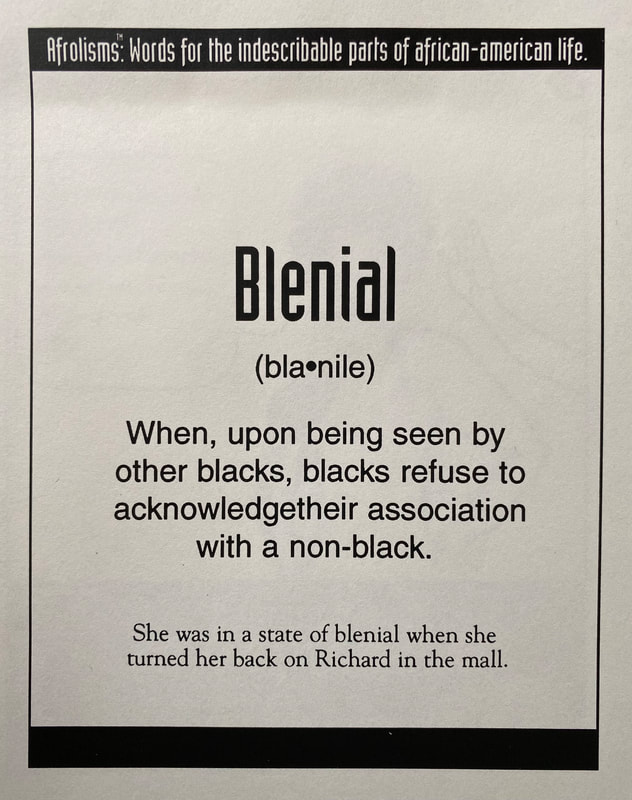
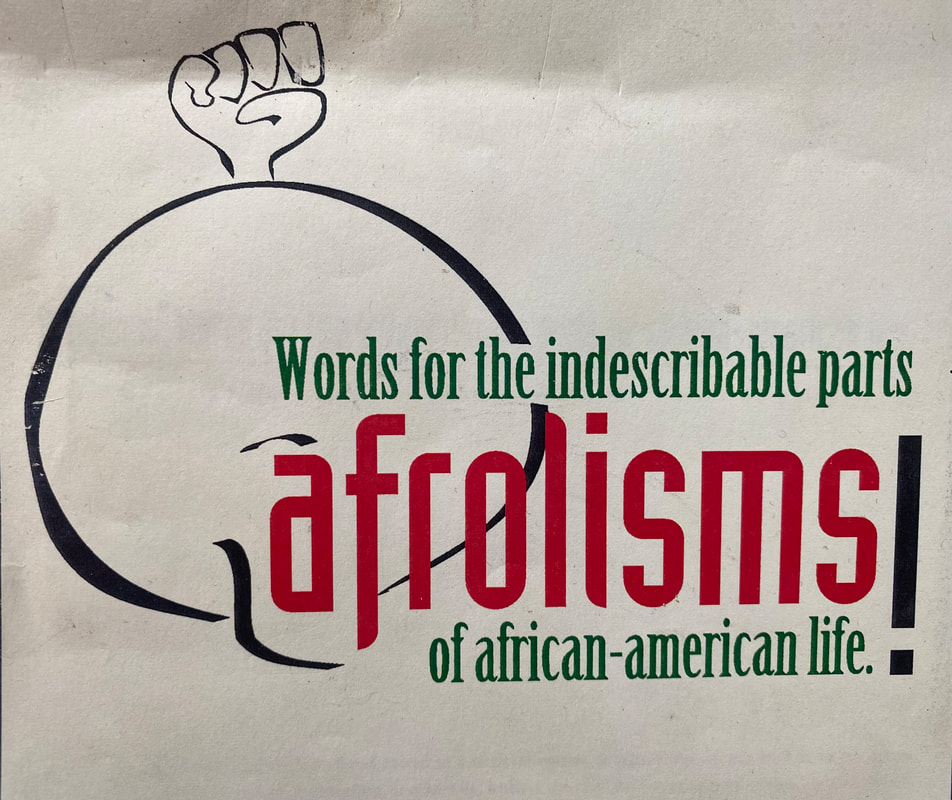
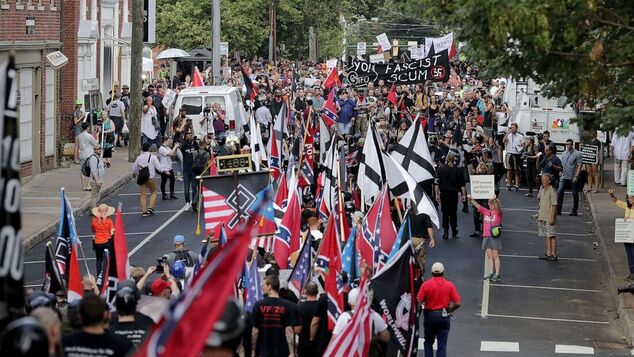
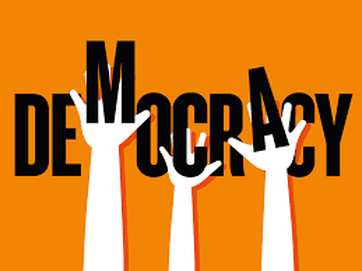
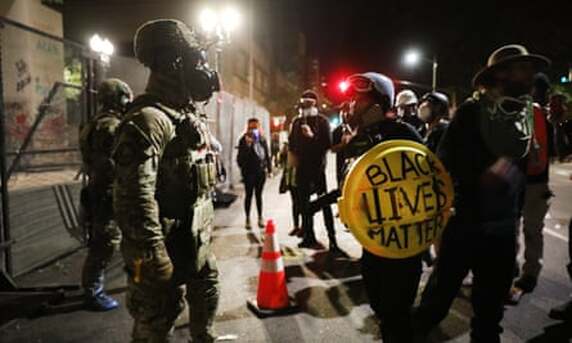
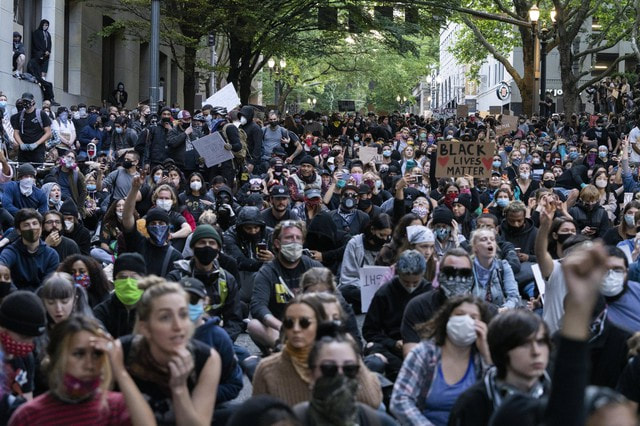
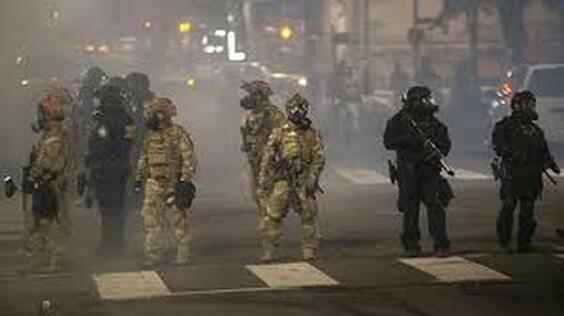
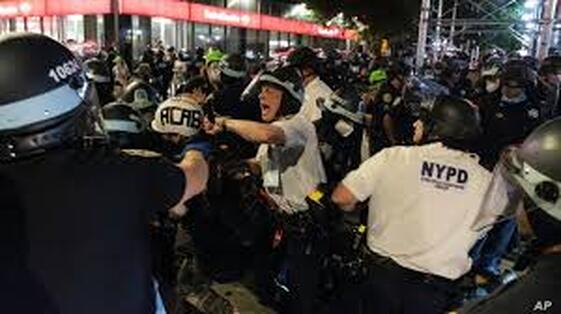
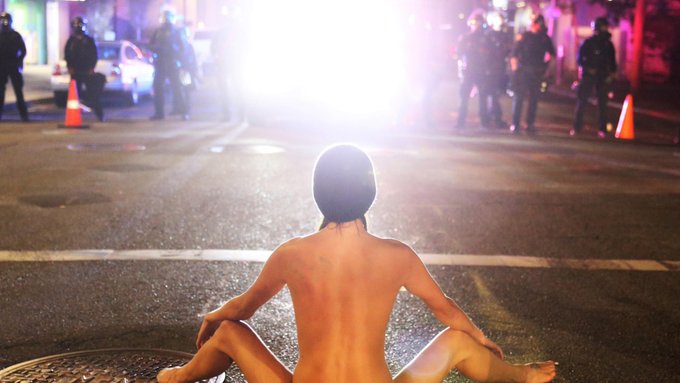
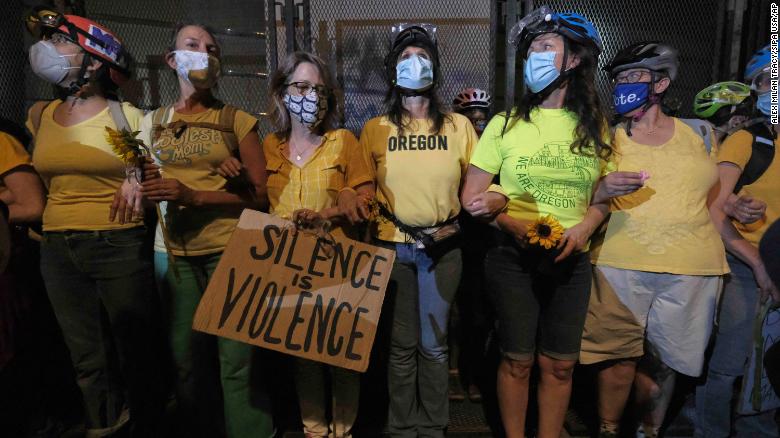
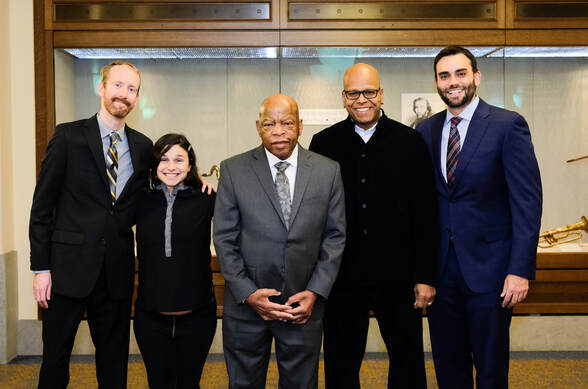
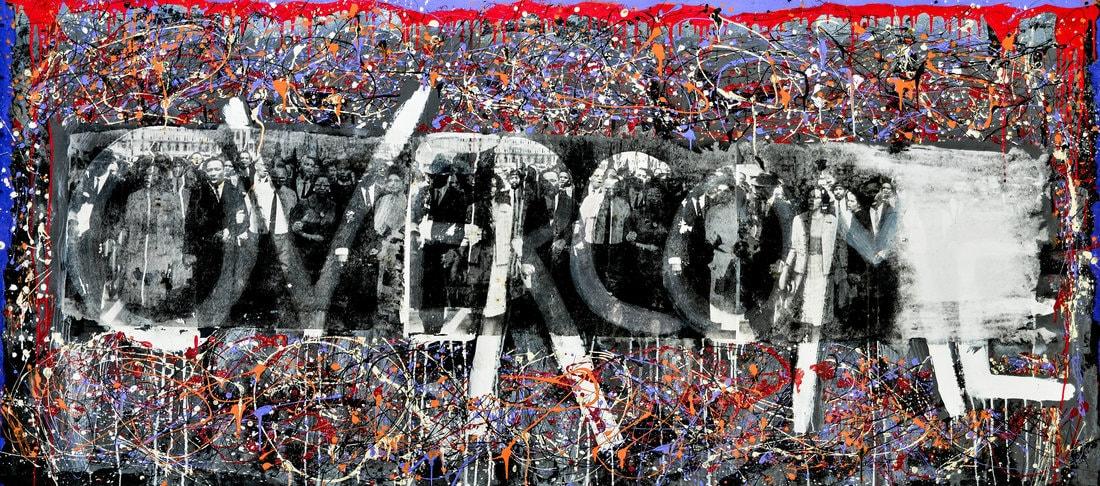
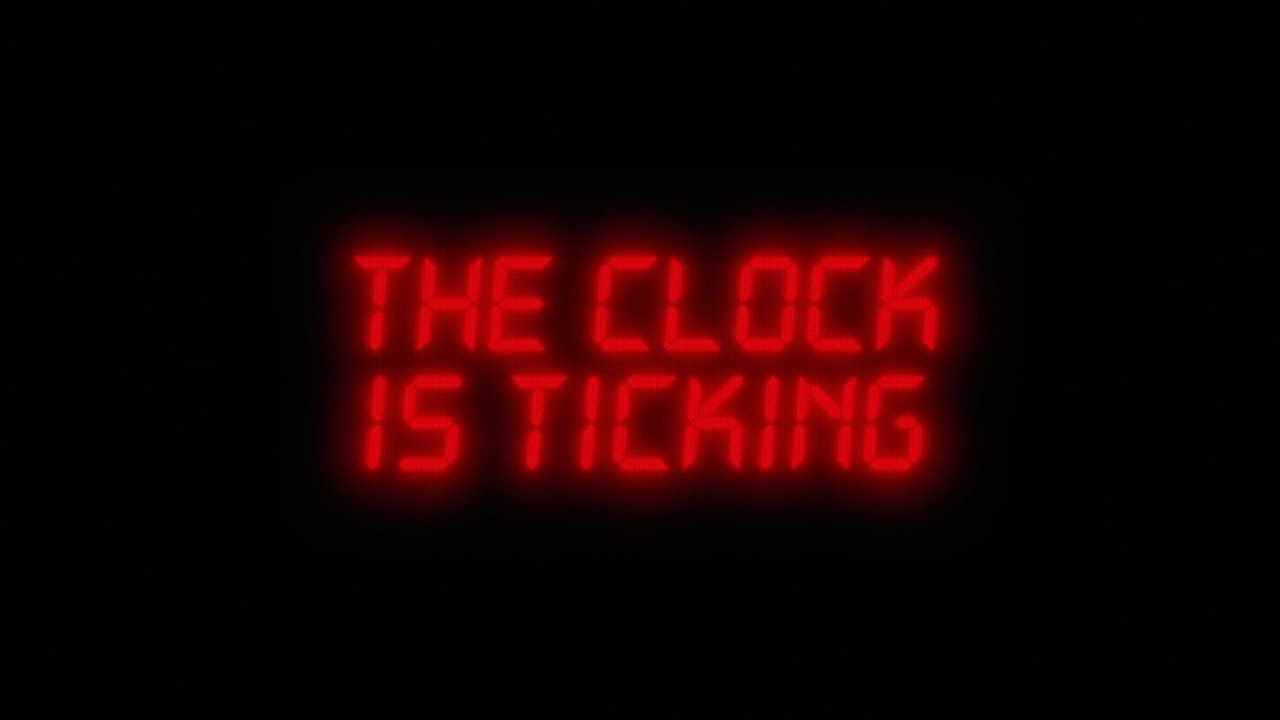
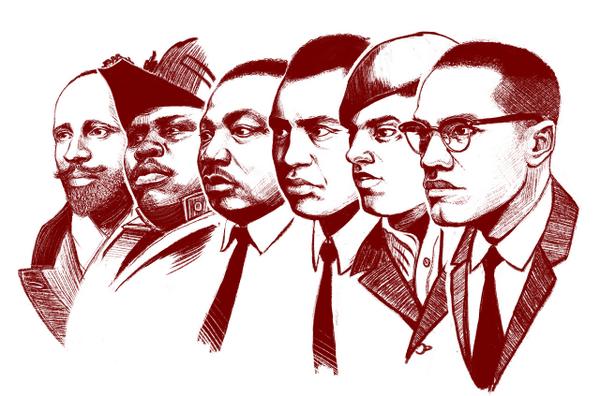
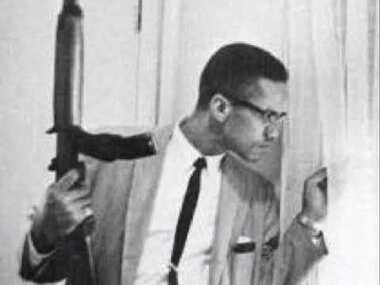
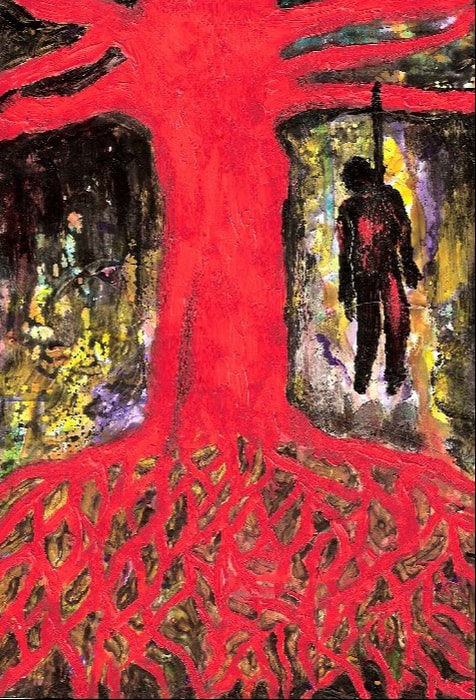
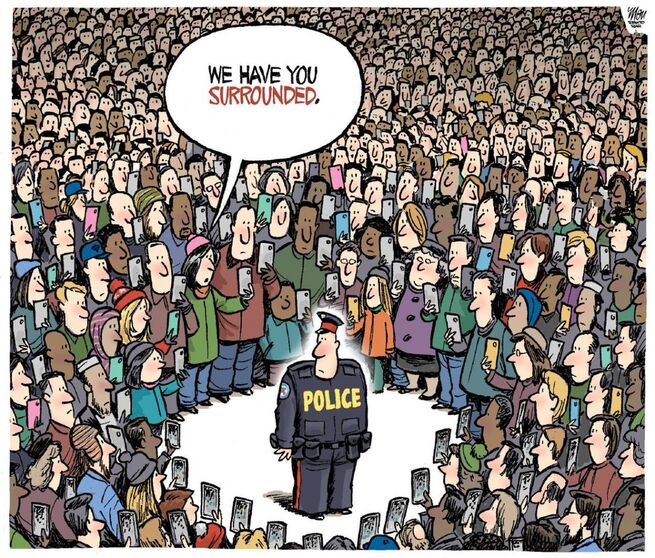
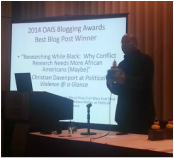
 RSS Feed
RSS Feed
